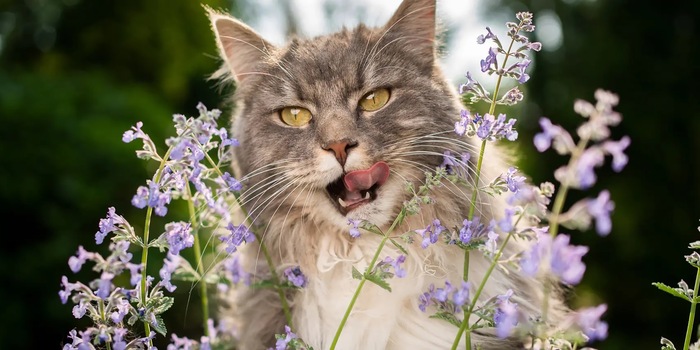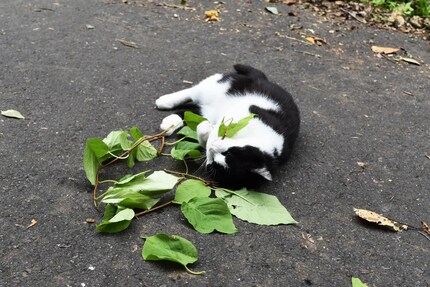
Chewed catnip protects against mosquitoes
Pets adore catnip not only because the plant intoxicates them. It also has a very practical reason.
Domestic cats love catnip. The fluffy animals go wild for the purple flowering plant: they rub their heads on it, throw themselves on it, roll around in it and lick and chew the leaves. Researchers led by Masao Miyazaki of the Japanese University of Iwate report in the scientific journal "iScience" that this has a practical reason in addition to the euphoric effect : The chewed or crumpled leaves secrete increased amounts of certain substances called iridoids. These distribute themselves on contact with the plant on the cat fur and help to repel mosquitoes.
Back in 2021, the team had found that iridoids in catnip (Nepeta cataria) and Japanese ray-grass (Actinidia polygama), also known as matabi, not only trigger euphoric states in domestic cats, but can also protect the animals from mosquitoes. For the current study, experts examined how intact and destroyed leaves differed in the amount and composition of iridoids secreted and how cats responded to the leaves.

Leaves of catnip and Japanese raygrass damaged by the researchers or the cats secreted more iridoids than intact leaves. The team also found an altered composition of the iridoids emitted from torn ray honeysuckle leaves. Here, iridoids could also be measured that were not measurable at all or only in very small amounts in healthy leaves. To test whether the cats' reaction to the damaged leaves differed from that to undamaged leaves, the researchers placed the leaves in bowls and sealed them with perforated lids. The cats licked and chewed on the lid, rubbed against it or rolled around - this response took longer with the torn leaves. According to the team, this transfers more iridoids to the cats' fur, and the animals are subsequently better protected against mosquitoes.
Spectrum of Science
We are a partner of Spektrum der Wissenschaft and want to make well-founded information more accessible to you. Follow Spektrum der Wissenschaft if you like the articles.
Originalartikel auf Spektrum.deTitelbild: © Nils Jacobi / Getty Images / iStock (Ausschnitt): Viele Hauskatzen stehen auf Katzenminze (Catnip). Die Pflanze gehört zur Familie der Lippenblütler. Meist ist die Art «Nepeta cataria» gemeint, auch «Echte Katzenminze» genannt. (Symbolbild)
Experts from science and research report on the latest findings in their fields – competent, authentic and comprehensible.
From the latest iPhone to the return of 80s fashion. The editorial team will help you make sense of it all.
Show all